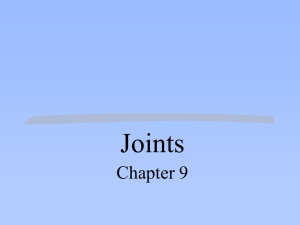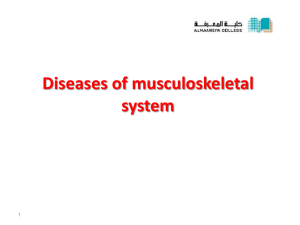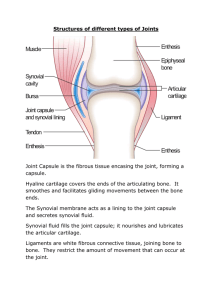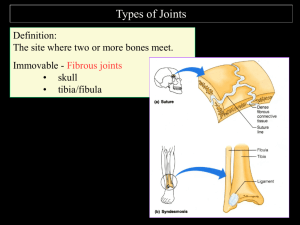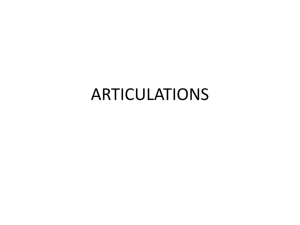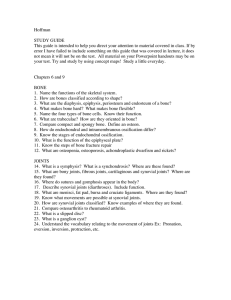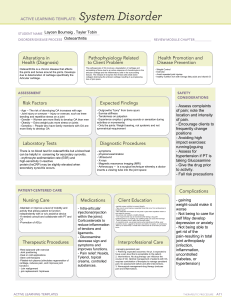Anatomy & Physiology CP Midterm Study Guide Chs 1
advertisement
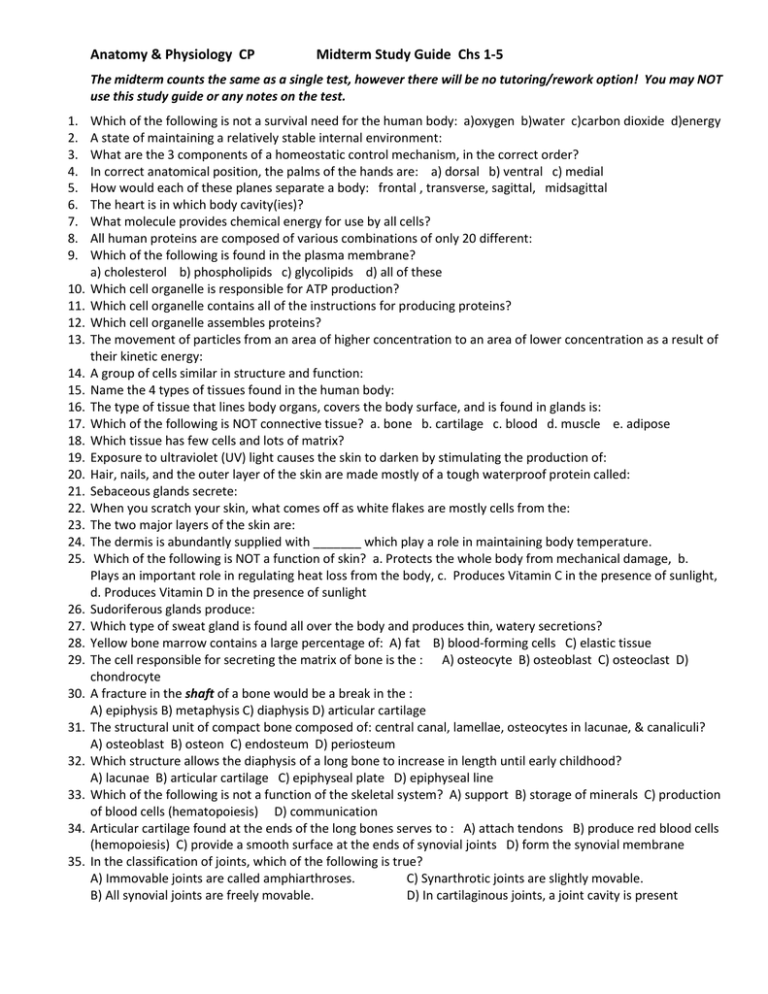
Anatomy & Physiology CP Midterm Study Guide Chs 1-5 The midterm counts the same as a single test, however there will be no tutoring/rework option! You may NOT use this study guide or any notes on the test. 1. 2. 3. 4. 5. 6. 7. 8. 9. 10. 11. 12. 13. 14. 15. 16. 17. 18. 19. 20. 21. 22. 23. 24. 25. 26. 27. 28. 29. 30. 31. 32. 33. 34. 35. Which of the following is not a survival need for the human body: a)oxygen b)water c)carbon dioxide d)energy A state of maintaining a relatively stable internal environment: What are the 3 components of a homeostatic control mechanism, in the correct order? In correct anatomical position, the palms of the hands are: a) dorsal b) ventral c) medial How would each of these planes separate a body: frontal , transverse, sagittal, midsagittal The heart is in which body cavity(ies)? What molecule provides chemical energy for use by all cells? All human proteins are composed of various combinations of only 20 different: Which of the following is found in the plasma membrane? a) cholesterol b) phospholipids c) glycolipids d) all of these Which cell organelle is responsible for ATP production? Which cell organelle contains all of the instructions for producing proteins? Which cell organelle assembles proteins? The movement of particles from an area of higher concentration to an area of lower concentration as a result of their kinetic energy: A group of cells similar in structure and function: Name the 4 types of tissues found in the human body: The type of tissue that lines body organs, covers the body surface, and is found in glands is: Which of the following is NOT connective tissue? a. bone b. cartilage c. blood d. muscle e. adipose Which tissue has few cells and lots of matrix? Exposure to ultraviolet (UV) light causes the skin to darken by stimulating the production of: Hair, nails, and the outer layer of the skin are made mostly of a tough waterproof protein called: Sebaceous glands secrete: When you scratch your skin, what comes off as white flakes are mostly cells from the: The two major layers of the skin are: The dermis is abundantly supplied with _______ which play a role in maintaining body temperature. Which of the following is NOT a function of skin? a. Protects the whole body from mechanical damage, b. Plays an important role in regulating heat loss from the body, c. Produces Vitamin C in the presence of sunlight, d. Produces Vitamin D in the presence of sunlight Sudoriferous glands produce: Which type of sweat gland is found all over the body and produces thin, watery secretions? Yellow bone marrow contains a large percentage of: A) fat B) blood-forming cells C) elastic tissue The cell responsible for secreting the matrix of bone is the : A) osteocyte B) osteoblast C) osteoclast D) chondrocyte A fracture in the shaft of a bone would be a break in the : A) epiphysis B) metaphysis C) diaphysis D) articular cartilage The structural unit of compact bone composed of: central canal, lamellae, osteocytes in lacunae, & canaliculi? A) osteoblast B) osteon C) endosteum D) periosteum Which structure allows the diaphysis of a long bone to increase in length until early childhood? A) lacunae B) articular cartilage C) epiphyseal plate D) epiphyseal line Which of the following is not a function of the skeletal system? A) support B) storage of minerals C) production of blood cells (hematopoiesis) D) communication Articular cartilage found at the ends of the long bones serves to : A) attach tendons B) produce red blood cells (hemopoiesis) C) provide a smooth surface at the ends of synovial joints D) form the synovial membrane In the classification of joints, which of the following is true? A) Immovable joints are called amphiarthroses. C) Synarthrotic joints are slightly movable. B) All synovial joints are freely movable. D) In cartilaginous joints, a joint cavity is present
